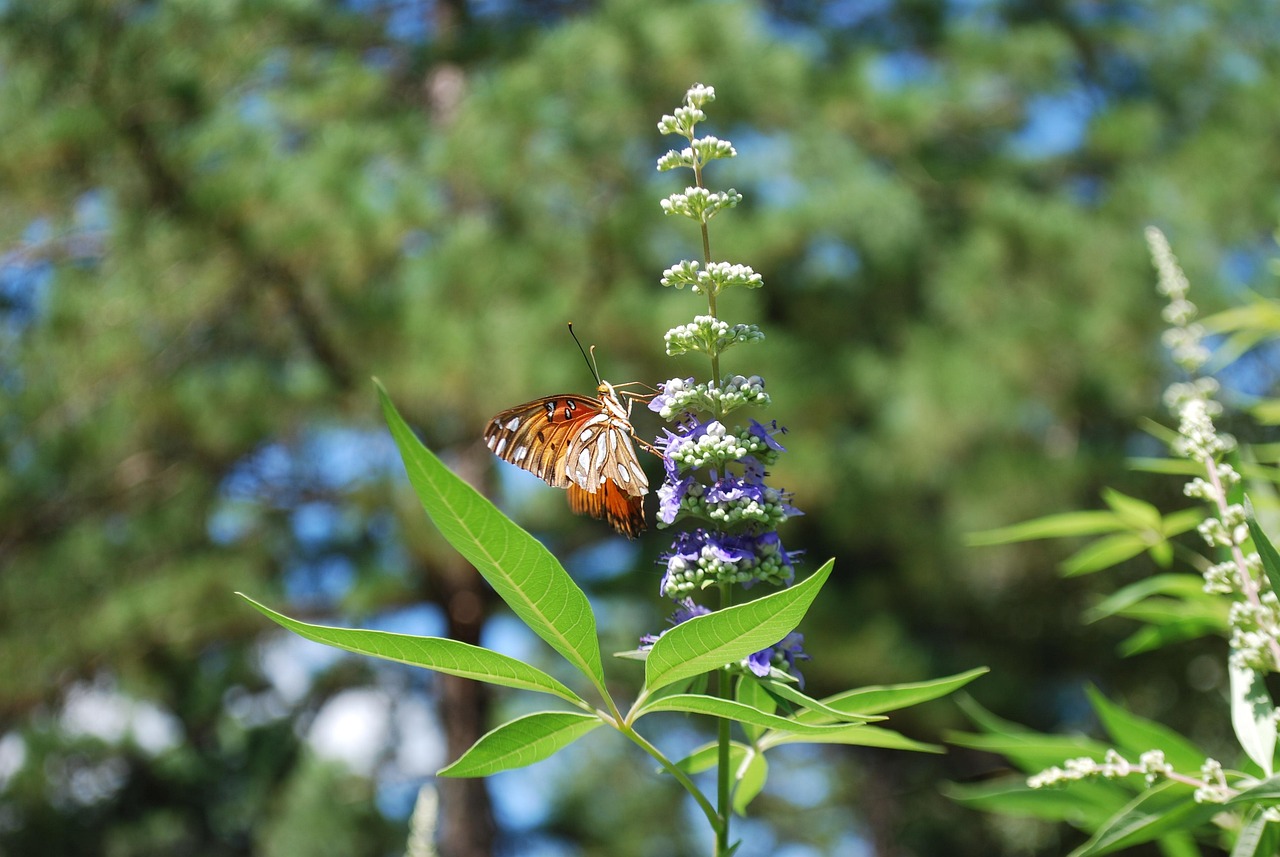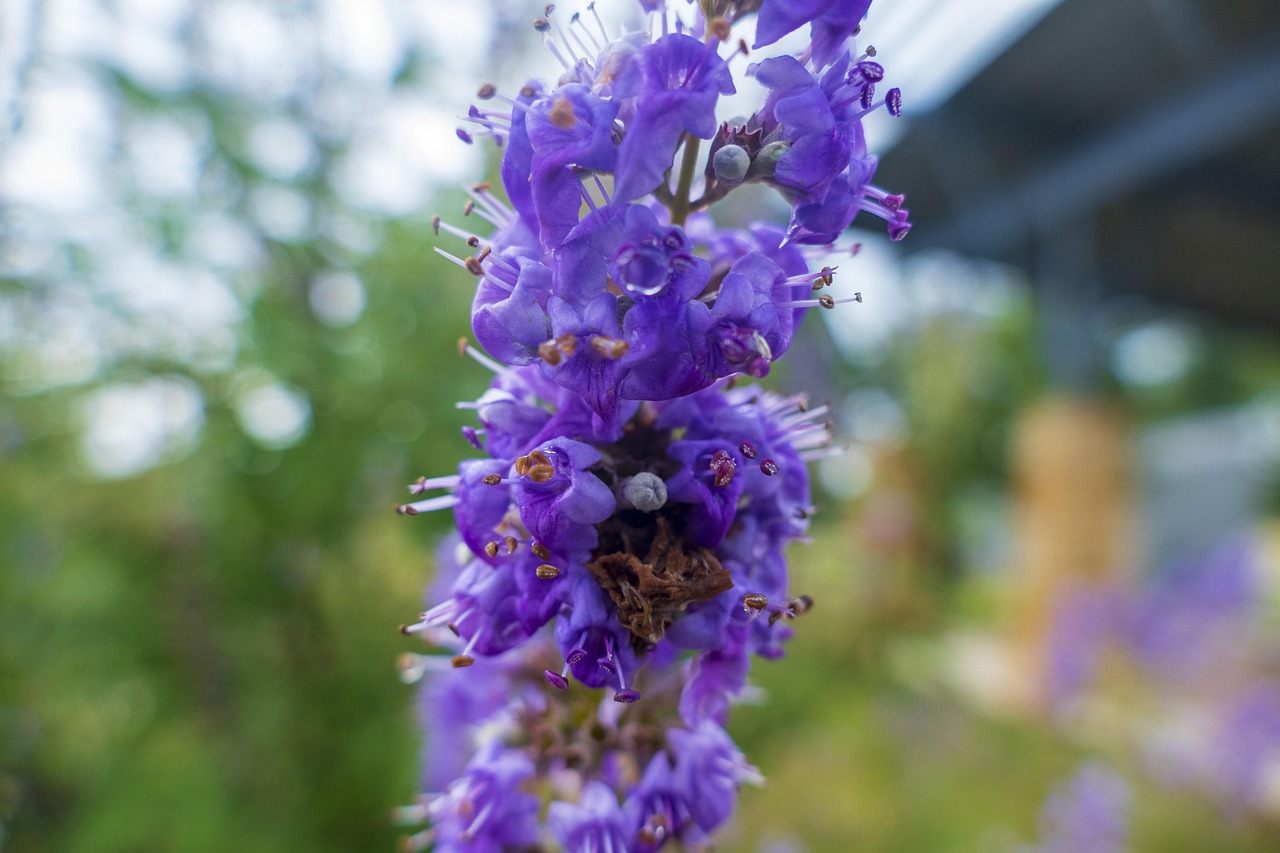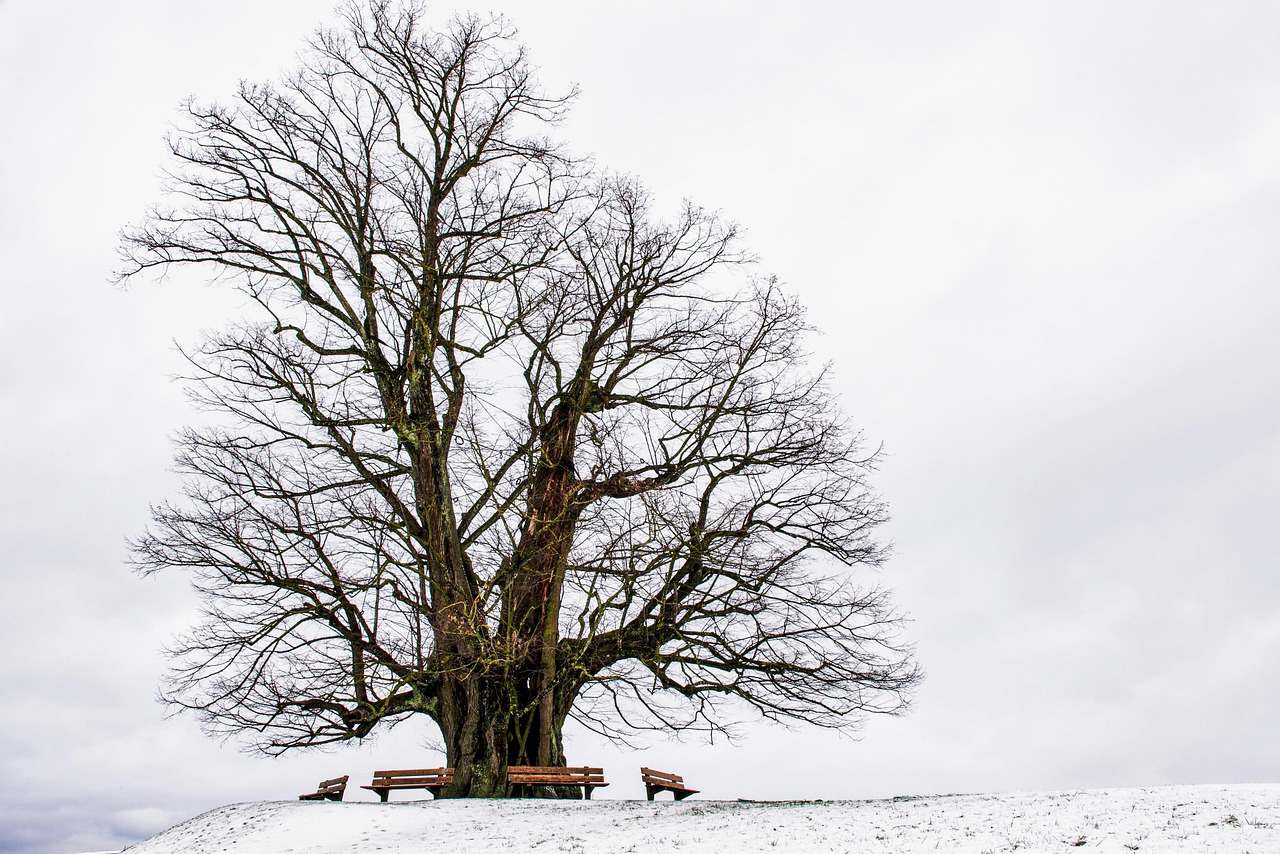The chaste tree (Vitex agnus-castus) typically exhibits a moderate growth rate, achieving heights of 10 to 15 feet in Mediterranean and temperate regions. Growth is influenced by climate, soil conditions, and care provided, with optimal growth occurring in warm, sunny environments.
Understanding the Chaste Tree
The chaste tree, known scientifically as Vitex agnus-castus, is a deciduous shrub native to the Mediterranean region. This plant is often celebrated for its aromatic foliage and beautiful purple flowers. Chaste trees thrive in various climates, but their growth patterns can differ significantly between Mediterranean and temperate regions. Understanding these differences is essential for gardeners and horticulturists seeking to cultivate this unique species.

Chaste trees are particularly well-suited to climates that provide a balance of warmth and moisture. They are drought-tolerant once established, making them an excellent choice for gardens in drier areas. However, they still require adequate water during their early years to develop strong root systems. The growth rate of chaste trees can vary based on several factors, including soil type, sunlight exposure, and climate conditions.
Growth Rate Influences
The growth rate of chaste trees is influenced by a variety of environmental factors. These include:
- Climate: Mediterranean climates with hot, dry summers and mild, wet winters promote faster growth.
- Soil Quality: Well-drained soils rich in organic matter encourage robust growth.
- Sunlight: Chaste trees flourish in full sun but can tolerate partial shade.
- Watering Practices: Regular watering during dry spells supports growth, particularly in the early stages.
Growth Performance in Different Regions
In Mediterranean regions, chaste trees often reach their full height more quickly than in temperate areas. The combination of warm temperatures and sufficient rainfall creates ideal conditions for rapid growth. In these climates, a well-cared-for chaste tree can grow up to 2 feet per year.

Conversely, in temperate regions, the growth rate may slow down due to cooler temperatures and shorter growing seasons. Here, chaste trees may only achieve growth rates of 1 to 1.5 feet per year. Understanding these regional differences is crucial for anyone looking to plant and nurture chaste trees successfully.
Optimal Conditions for Growth
To achieve the best growth rates for chaste trees, certain conditions should be met. These conditions include:
- Planting in well-drained soil with a pH between 6.0 and 8.0.
- Ensuring at least six hours of full sunlight each day.
- Regularly applying mulch to retain soil moisture and suppress weeds.
- Fertilizing with a balanced fertilizer during the growing season to support healthy development.
Common Challenges
Despite their adaptability, chaste trees can face challenges that may impact their growth rate. Some common issues include:

- Pests: Aphids and spider mites can affect foliage health.
- Diseases: Root rot may occur in overly wet conditions.
- Cold Temperatures: In temperate zones, late frosts can damage new growth.
Managing these challenges effectively can help ensure that chaste trees thrive and reach their potential growth rates in both Mediterranean and temperate regions. With proper care and attention, gardeners can enjoy the beauty and benefits of this unique plant in various landscapes.
Conclusion Implications
Ultimately, the growth rate of chaste trees varies significantly depending on the climatic conditions and care practices employed. By understanding these factors, gardeners can make informed decisions to enhance their cultivation efforts.
Propagation Methods for Chaste Trees
To cultivate chaste trees successfully, understanding the various propagation methods is essential. Different techniques can influence growth rates and overall plant health. The most common methods for propagating chaste trees include:

- Seed Propagation: Seeds can be sown directly in the garden or started indoors. However, germination may take time, often requiring a cold stratification period of 30 to 60 days.
- Cuttings: Taking stem cuttings in late spring or early summer is a reliable method. Cuttings should be about 6 inches long and placed in a well-draining medium.
- Layering: This technique involves bending a low branch to the ground and covering it with soil, allowing it to root while still attached to the parent plant.
Optimal Timing for Propagation
The timing for propagating chaste trees can significantly affect success rates. The best time for each method varies:
- Seeds: Sow seeds in the spring after the last frost or in fall for natural winter stratification.
- Cuttings: Take cuttings in late spring when the plant is actively growing.
- Layering: Perform layering in early spring to promote root development before the growing season.
Growth Rate Variations by Cultivar
Chaste trees come in different cultivars, and each can exhibit varying growth rates. Some popular cultivars include:
| Cultivar | Growth Rate | Height | Characteristics |
|---|---|---|---|
| ‘Shoal Creek’ | Moderate | 10-12 feet | Known for its upright growth and abundant flowers. |
| ‘Delta Blues’ | Fast | 8-10 feet | A compact variety with vibrant purple flowers. |
| ‘Royal Purple’ | Slow | 6-8 feet | Features striking dark purple foliage. |
Selecting the right cultivar can enhance growth performance based on specific environmental conditions. Gardeners should consider their regional climate when choosing a cultivar to ensure optimal growth rates.
Watering Requirements for Chaste Trees
Watering practices play a crucial role in the growth rate of chaste trees. While they are drought-tolerant, consistent watering during their initial establishment is vital. Here are some guidelines:
- Initial Establishment: Water newly planted chaste trees deeply once a week for the first year.
- Drought Periods: During prolonged dry spells, provide supplemental watering every two weeks.
- Drainage: Ensure that planting areas have good drainage to prevent root rot.
Nutrient Needs and Fertilization
Chaste trees benefit from nutrient-rich soil, but their fertilization needs can vary by region and soil quality. Here are some considerations:
- Soil Testing: Conduct soil tests to determine nutrient levels and pH before planting.
- Balanced Fertilizer: Use a slow-release, balanced fertilizer in early spring to support growth.
- Avoid Over-Fertilization: Excess nutrients can lead to lush foliage at the expense of flowering.
The right balance of nutrients will promote healthy growth and enhance the overall vigor of chaste trees, allowing them to thrive in both Mediterranean and temperate climates.
Pest and Disease Management Strategies
Effective management of pests and diseases is essential for maintaining the health and growth rate of chaste trees. Here are strategies to consider:
- Regular Monitoring: Check plants frequently for signs of pests like aphids or spider mites.
- Natural Predators: Encourage beneficial insects that prey on common pests.
- Pesticide Use: If necessary, use organic pesticides as a last resort, following all safety guidelines.
A proactive approach to pest management will help keep chaste trees healthy and promote steady growth rates year-round.
Pruning Techniques for Chaste Trees
Pruning is an essential practice that can significantly influence the growth rate and overall health of chaste trees. Proper pruning techniques encourage better air circulation, promote flowering, and maintain an attractive shape. Here are some effective pruning strategies:
- Timing: The best time to prune chaste trees is in late winter or early spring before new growth begins.
- Thinning: Remove dead or damaged branches to improve light penetration and air flow.
- Shaping: Trim back overly long stems to maintain a compact shape and encourage bushier growth.
- Deadheading: Regularly remove spent flowers to promote continuous blooming throughout the growing season.
Varietal Characteristics Affecting Growth Rates
Different varieties of chaste trees can have unique characteristics that affect their growth rates. Factors such as flower color, leaf shape, and growth habit can influence how these trees adapt to their environments. Below are a few notable varieties and their characteristics:
| Cultivar | Flower Color | Growth Habit | Growth Rate |
|---|---|---|---|
| ‘Pink Delight’ | Pink | Upright | Moderate |
| ‘Blue Spire’ | Blue | Spreading | Fast |
| ‘Agnus-Castus’ | Purple | Tall and Narrow | Slow |
Selecting the right cultivar based on specific garden conditions can enhance growth performance and flowering potential.
Seasonal Growth Patterns
The growth patterns of chaste trees fluctuate with the seasons. Understanding these seasonal changes can help gardeners optimize care for their plants. The following outlines the typical seasonal growth patterns:
- Spring: New growth emerges as temperatures rise, and flowering begins. This is the best time for pruning and fertilizing to encourage robust growth.
- Summer: Growth continues, with chaste trees reaching their peak height and producing abundant flowers. Adequate watering is crucial during this period.
- Fall: As temperatures cool, growth slows down. It is a good time to prepare plants for winter, including mulching to protect roots.
- winter: Dormancy occurs, and minimal care is required. This is an ideal time for any necessary structural pruning.
Soil Considerations for Optimal Growth
The soil quality where chaste trees are planted plays a significant role in determining their growth rate. Chaste trees thrive in various soil types, but certain conditions are preferable:
- Well-Draining Soil: Chaste trees prefer sandy or loamy soils that drain well to prevent root rot.
- Organic Matter: Incorporating organic materials such as compost can improve soil structure and nutrient content.
- pH Levels: A slightly acidic to neutral pH (6.0 to 8.0) is ideal for optimal nutrient uptake.
Climate Adaptation Strategies
Adapting chaste trees to different climates is key to maximizing their growth potential. Here are some strategies for successful adaptation:
- Selecting Native Varieties: Choose cultivars known to thrive in your specific climate zone.
- Avoiding Frost Damage: In temperate regions, consider planting chaste trees in sheltered locations to minimize frost risk.
- Microclimate Utilization: Use walls or fences to create microclimates that provide warmth and protection from harsh winds.
By employing these strategies, gardeners can ensure that chaste trees grow vigorously and reach their full potential in a variety of settings.
Nutrient Deficiency Symptoms
Adequate nutrition is crucial for the health of chaste trees. Identifying nutrient deficiencies early can prevent stunted growth and poor flowering. Common symptoms of nutrient deficiencies include:
- Nitrogen Deficiency: Yellowing leaves, particularly older leaves, indicate a lack of nitrogen.
- Phosphorus Deficiency: Dark green or purple-tinged leaves may suggest insufficient phosphorus levels.
- Potassium Deficiency: Browning leaf edges and weak stems are signs of potassium deficiency.
Monitoring these symptoms allows for timely interventions, ensuring that chaste trees remain healthy and vigorous throughout their growth cycle.
Long-Term Care and Maintenance
Once chaste trees are established, ongoing care is essential for sustaining their growth and health over the years. Here are some long-term maintenance practices to consider:
- Regular Watering: Continue to monitor soil moisture, especially during dry spells. Established trees may require less frequent watering but should still be assessed for drought stress.
- Annual Pruning: Perform light pruning each year to remove any dead or overcrowded branches. This will encourage a healthy structure and promote better air circulation.
- Mulching: Applying mulch around the base of the tree can help retain moisture, suppress weeds, and regulate soil temperature.
- Fertilization Schedule: Reassess soil nutrient levels periodically. Adjust fertilization based on soil tests to ensure that trees receive the necessary nutrients for continued growth.
Chaste Trees in Landscaping
Chaste trees are versatile and can be used effectively in various landscaping designs. Their ornamental value adds beauty and interest to gardens. Here are some ways to incorporate them into landscapes:
- As Specimen Plants: Due to their height and flowering capabilities, chaste trees can serve as focal points in gardens or yards.
- In Mixed Borders: Planting chaste trees alongside other perennials and shrubs can create vibrant, layered landscapes.
- For Privacy Screens: Grouping several chaste trees can form a natural privacy screen or windbreak.
- Pollinator Gardens: Their flowers attract bees and butterflies, making them an excellent addition to pollinator-friendly gardens.
Cultural Significance and Uses
The chaste tree has a rich history, spanning various cultures and uses. Traditionally, it has been valued not only for its ornamental qualities but also for its medicinal properties. Here are some notable aspects:
- Medicinal Uses: In herbal medicine, chaste tree extract is often used to support women’s reproductive health and hormonal balance.
- Historical Significance: Ancient Greeks and Romans associated the chaste tree with chastity, and it was often planted in gardens and temples.
- Culinary Uses: The seeds of the chaste tree have been used as a spice known as “chaste tree pepper” or “monk’s pepper.”
Potential Challenges in Cultivation
While chaste trees are generally hardy, they may encounter specific challenges in cultivation. Being aware of these potential issues can help gardeners take preventative measures:
- Pest Infestations: Besides aphids and spider mites, chaste trees may attract other pests such as scale insects. Regular monitoring is essential.
- Environmental Stress: Excessive heat or cold can impact growth. Monitoring local weather patterns can help in providing necessary interventions.
- Soil Compaction: Over time, soil may become compacted, reducing root growth. Incorporating organic matter regularly can alleviate this issue.
Final Thoughts
The chaste tree is a remarkable plant that showcases resilience and adaptability across various climates, especially in Mediterranean and temperate regions. Understanding its growth rate and care requirements is crucial for successful cultivation. Key factors influencing growth include proper soil conditions, adequate watering, regular pruning, and attentive pest management.
By selecting the appropriate cultivar for specific environments and employing effective maintenance strategies, gardeners can enjoy the many benefits that chaste trees offer. From their ornamental beauty to their ecological contributions, chaste trees are an excellent choice for enhancing both residential and public landscapes.
As more people become aware of sustainable gardening practices, incorporating plants like the chaste tree will not only beautify spaces but also support biodiversity, making them a wise addition to any garden or landscape design. With proper care and attention, these trees will thrive for years, providing visual appeal and ecological benefits alike.
